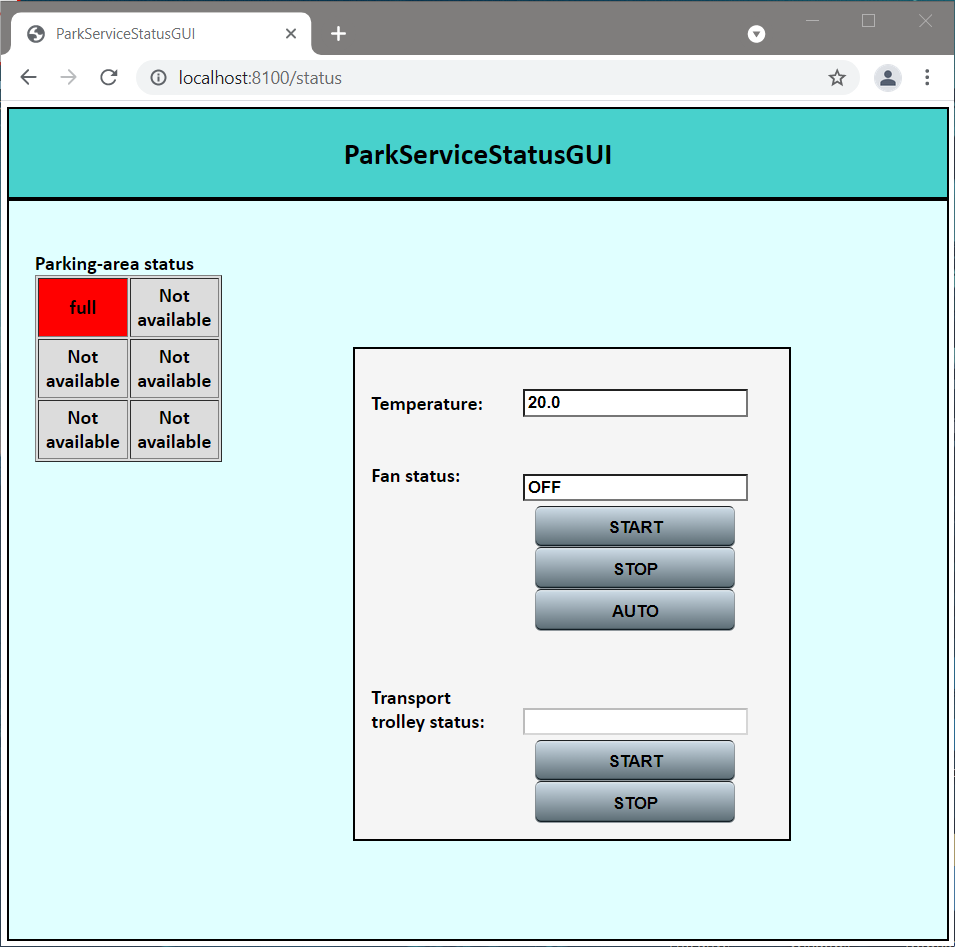Sprint 1
Project
Sprint 2
Sensors and actuators
The behavior of
While the client and the manager GUIs should have proper Web interfaces, we believe that, for mock-objects, simpler

Since

The manager GUI
The

The interaction with the business logic of this external component, called

The

Testing
All the tests conceived for Sprint 1 must still hold. Moreover, we defined a new test case to ensure that the system checks
We also implemented an additional test case to check wether the mock objects are working as intended. Such test requires
We report hereunder the most significant fragments of the new tests:
@Test
fun checkDoors() {
actor!!.emit("indoorOccupied", "indoorOccupied(0)")
actor!!.forward("enterRequest", "enterRequest(0)", "parkmanagerserviceactor")
actor!!.forward("carEnter", "carEnter(1)", "parkmanagerserviceactor")
assertNotMovingInTime(3000)
actor!!.emit("indoorCleared", "indoorCleared(0)")
actor!!.forward("enterRequest", "enterRequest(0)", "parkmanagerserviceactor")
assertLocationInTime("6", "0", "N", 10000)
assertLocationInTime("0", "0", "S", 20000)
actor!!.emit("outdoorOccupied", "outdoorOccupied(0)")
actor!!.forward("exitRequest", "exitRequest(0)", "parkmanagerserviceactor")
assertNotMovingInTime(3000)
actor!!.emit("outdoorCleared", "outdoorCleared(0)")
actor!!.forward("exitRequest", "exitRequest(0)", "parkmanagerserviceactor")
assertLocationInTime("6", "4", "S", 20000)
assertLocationInTime("0", "0", "S", 50000)
}
Summary architecture of the system as of Sprint 2
 |
Executable model: trolley.qak | Test plan: Sprint2Test.kt |

